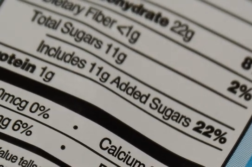MADISON, Wis. (Ivanhoe Newswire) — There is new hope for patients with a rare autoimmune disorder. In mild cases, scleroderma causes areas of hardened skin. But in severe cases, it can also cause deadly hardening of internal organs like the lungs. A transplant typically used to treat cancer is having remarkable results for patients who had little hope of surviving.
A year ago, Chuck Beschta couldn’t walk more than a few minutes without stopping to rest.
“Just going out and doing normal activities outside like raking the lawn, mowing the grass, shoveling the driveway, whatever—snow blowing, those became impossible,” Beschta said.
After months of testing, he was diagnosed with severe scleroderma, which was hardening his skin but even worse. It was hardening his lungs, making it hard to breathe.
“He was getting worse despite the best therapy we had to offer,” Kevin McKown, MD, rheumatologist at the University of Wisconsin Hospital in Madison, described.
Dr. McKown recommended a stem cell transplant newly approved for scleroderma to re-boot chucks immune system.
Dr. McKown told Ivanhoe, “There’s a process by which they try to remove the autoreactive immune cells, the cells that are caught in the immune process and then they infuse that back in and hope that the body will basically take up and graft that immune system.”
Beschta saw almost immediate results. His skin was softer, and his breathing improved. He hopes his scleroderma has been cured.
“I think we can be optimistic and so far, the people who have been followed out as far as ten years out don’t seem to be getting it back,” Dr. McKown said.
Without a transplant, less than half the patients, like Beschta, who have diffuse scleroderma and severe lung disease live ten years past diagnosis. Stem cell transplants are commonly used to treat leukemia and lymphoma, cancers that affect the blood and lymphatic system.
Contributors to this news report include: Pam Coshun, Producer; Sandy Kowal, Videographer; Roque Correa, Editor.
To receive a free weekly e-mail on Medical Breakthroughs from Ivanhoe, sign up at: http://www.ivanhoe.com/ftk
MEDICAL BREAKTHROUGHS
RESEARCH SUMMARY
TOPIC: NEW THERAPY FOR SCLERODERMA
REPORT: MB #4698
BACKGROUND: Scleroderma is an autoimmune rheumatic disease where an overproduction of collagen produced in the body tissues causes the skin and internal organs to harden. The symptoms and effects range by person, but some common symptoms include hardened patches of skin (locations on the body vary,) painful and numb-feeling fingers and toes, and sharp internal pain in the esophagus, intestines, heart, lungs, or kidneys. Women are four times as likely to have scleroderma and the onset is between 30 and 50 years of age. However, anyone from infants to the elderly can have scleroderma. Possible risk factors include having certain gene variations as other family members, ethnic groups, exposure to certain medications or drugs, and already having another autoimmune disease, like rheumatoid arthritis, lupus or Sjogren’s syndrome.
(Source: https://www.scleroderma.org/site/SPageNavigator/patients_whatis.html;jsessionid=00000000.app30132b?NONCE_TOKEN=9B76519DF6B5819859319F0B63B805C9#.XheCGVVKhaQ , https://www.mayoclinic.org/diseases-conditions/scleroderma/symptoms-causes/syc-20351952 )
DIAGNOSING: A physical exam will be conducted as well as a blood test to check for elevated levels of antibodies the immune system produced. The doctor will also take a sample of skin to be tested in the lab. If there are complaints about internal pain, the doctor may run other tests, including imaging, organ function, and other blood tests.
(Source: https://www.mayoclinic.org/diseases-conditions/scleroderma/diagnosis-treatment/drc-20351957 )
NEW TECHNOLOGY: A new stem cell transplant that’s commonly known to treat cancer is improving the quality and quantity of life for those with scleroderma. Rheumatologists at University of Wisconsin Health tested the treatment since they have already been conducting bone marrow transplants for decades. Surgeons take out a sample of the patient’s bone marrow, isolate the stem cells, and use radiation and chemotherapy to clean out their immune system. The same stem cells are later injected back into the patient’s immune system with the hope that new cells will grow and the system is rid of the bad ones. The process is dangerous when the cells are taken out because the patient’s immune system is more vulnerable, making infections more likely to occur. However, after four and a half years, 79% of patients that underwent the treatment were alive without serious complications compared to 50% that were treated with the original drugs.
FOR MORE INFORMATION ON THIS REPORT, PLEASE CONTACT:
Bethany Campbell
608-262-0455
If this story or any other Ivanhoe story has impacted your life or prompted you or someone you know to seek or change treatments, please let us know by contacting Marjorie Bekaert Thomas at mthomas@ivanhoe.com




